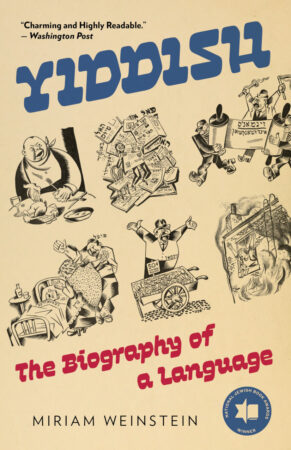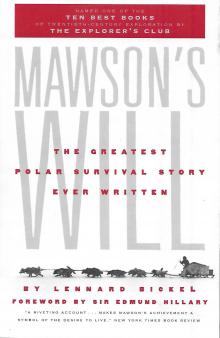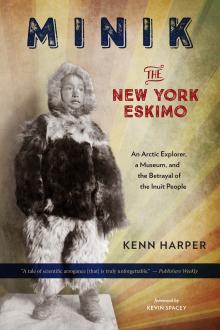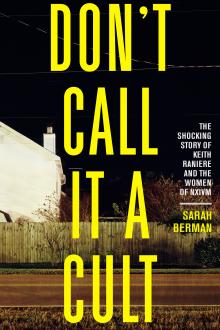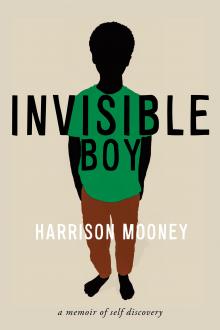Excerpt
MY PARENTS LOVED to travel. They were not rich people, but in the years after World War II they would leave our Bronx apartment and head off on vacations, first to Europe, and then little by little to almost every continent. They visited big famous cities and dusty crossroads towns. Often, they would return telling a variant of a familiar tale: "There we were, in this little shop in . . ." (fill in the blank: Dublin, Johannesburg, Tashkent). "I don’t know; somehow I got the idea." (From what? A tilt of the head? A look in the eyes?) "So I says to him, ‘Vus makhst?’" (what’s doing). "And this guy who, two minutes before, wouldn’t give us the time of day becomes all of a sudden our buddy, our friend. He invites us home, shows us around the whole neighborhood, a regular landsman" (fellow countryman).
For a thousand years, this was the standard Jewish story. Yiddish was the secret handshake, the golden key. It was the language that defined a world and a people. Yiddish means "Jewish." Its words were, simply, the sound of Jewish life.
Babies were born into rooms full of women crooning in Yiddish; corpses were washed and prepared to the sounds of Yiddish grief. For a people without a country, without a government, without protection of any dependable kind, language became a powerful glue. It connected European Jews to each other even as it separated them from their neighbors – people among whom they may have lived for hundreds of years. It also linked them to their past through their sacred language, Hebrew.
Because it was so easy for words and phrases from the Hebrew prayers they recited every day to slip into their ordinary Yiddish speech, their place in "Jewish time" was confirmed, from the beginning of the world until the coming of the Messiah and the End of Days. It allowed them to live outside Christian or secular history and keep their vision of peoplehood alive. In the meantime, when they wandered in the real, here-and-now world, it was their passport and amulet. It was their strength.
The tale my parents told on a dozen returns is hardly heard anymore. These days, unless your travels are circumscribed – retirement homes, Holocaust museums, Hasidic enclaves of Brooklyn or Jerusalem – you will not hear Yiddish in the shop or the street, the synagogue or the house. That is not to say that a few words of it aren’t sprinkled through English, like raisins in rugelach. Politicians have chutzpah, tv personalities kibbitz, Americans of all ethnic backgrounds have learned to slap their hands on their hips and demand, singsong, "So what does that make me, chopped liver?" But as a living language, Yiddish barely qualifies. It is a speech system that is faltering, even on life support. (With one big exception: the ultra-Orthodox. Their astounding fecundity, history’s latest surprise, may change the epilogue but does not alter the bulk of the tale.)
So how did it happen? How did a language that cursed and crooned for a thousand years fade in the course of one little lifetime? What could have happened to its self-contained world? (Better a Jew without a beard than a beard without a Jew would be the appropriate Yiddish proverb here.) And why was the tongue itself perhaps einstik, unique, in the history of languages? (Yes, I know that is an enormous claim.)
When my parents were born, in the early years of the twentieth century, something like eight million souls called Yiddish mame loshn, mother tongue. Their world was bursting with Yiddish schools offering competing political philosophies, newspapers on every side of every burning issue, plays that ranged from melodramas like Isaac Zolatorevsky’s Money, Love, and Shame to significant dramatic works like Jacob Gordin’s Jewish King Lear or Sholem Asch’s God of Vengeance. It had journals of every stripe, thousands of book titles in print. Radio broadcasting and an international film industry developed as technologies grew.
By the time my parents died three-quarters of a century later, Yiddish books were being thrown out wholesale in trash cans and Dumpsters. New York’s great newspaper the Forverts (Daily Forward), which had outlived competitor after competitor, was reduced to a weekly written by people who, in more commodious times, would never have been caught dead sharing the same page. Not only did my parents’ grandchildren not know the Yiddish language, but even the Hebrew they learned in Hebrew school had been systematically cleansed of the Yiddish pronunciation that had been ubiquitous in my parents’ youth, and in mine.
But the object of this book is not breast-beating for the good old days of yore, when there was singing every shabes, Sabbath, chicken soup in every pot. The object, as any self-respecting yid, Jew, would know, is to strengthen the golden chain of continuity.
To that end, I have written history-as-story, filling the tale with flesh-and-blood people with obsessive humor, visionary courage, brilliant desperate causes, and glorious flaws. As will immediately be obvious, I am a journalist, not a historian, linguist, or any kind of scholar. I did my research – meeting mavens, experts; working my way through lights-on-timers library stacks – as a yederer, an everyman.
What I soon learned was that no language has been so adored, so despised, so ostentatiously ignored. Aaron Lansky, the book rescuer who invented the midnight Dumpster run, estimates that out of thirty-five thousand different Yiddish titles that have been published, only 0.5 percent have been translated into English. We won’t even go into the number of folk tunes, music hall ditties, and poignant poems of labor or love that are known only to the Yiddish-speaking few.
So this is a story that begs to be told. The last book that chronicled the Yiddish language was a four-volume history written in Yiddish during and after World War ii by the brilliant scholar Max Weinreich. Two volumes have been translated into English. They are heavy going. In the 1960s and 1970s Leo Rosten wrote marvelously funny books describing the way that Yiddish was used at the time, but they assumed some Yiddish or Jewish background or inclination.
This book requires nothing more than an open heart and a curious mind. Well, maybe also a certain flexibility with regard to spelling. Standardized Yiddish orthography was not even invented until 1936 and has been adopted, grudgingly, only in the last several years. Then there is the matter of standardized transliteration. (If you don’t know what that means, don’t worry, you’ll learn.) Although I have tried to use it where possible, I have sometimes substituted more familiar versions, like the common rendition of Chanukah instead of the more correct khanike. I have tried to strike a middle ground between foreignness and flavor. Readers will learn how, for a language that has been roundly maligned and famously praised, even spelling proclaims a writer’s political, religious, and cultural stance.
For me, this tale qualifies as a miracle. A language is born in shadow with the lowliest of aims – only for women, only for the untutored, only for ordinary, workaday use. Yet that very dailiness and lack of expectation allow it to grow. It expands, sweet and light as a New Year’s honey cake, pulses with life for a thousand years. It links its people to their illustrious past. It has the world’s best sense of humor, unable to resist the virtuoso joke even in the curse. (May you turn into a blintz, and may your enemy turn into a cat, and may he eat you up and choke on you, so we can be rid of you both.) It gets discovered by a generation of intellectuals and politicos. Time and again the highbrow thinks he will just use Yiddish to lure the uneducated masses to listen to him expound his brilliant ideas. And time and again it is he who does the listening and learning, in thrall to the language and to its folk.
Then, just when this poor no-account tongue goes into creative overdrive, winning a crumb of respect and even hope for a bit of glory, it all disappears. Holocaust, assimilation, executions, displacement, language police, and then, incredibly, stone silence. One brief moment of flame, a pintele yid, a spark of Jewishness, burns and then sputters. A few thousand folk songs, a few hundred ways of parsing the fine points of human behavior – shnuk, shlemiel, shlimazl – and those thirty-five thousand different books.
But even in dying, this most practical of tongues has a job to do: It allows Hebrew, the ancient, holy, pre-Yiddish tongue, to be reborn. Yiddish gives up its life for its parent/child. What could be more Jewish-motherish, more hartsik, caring, than that?
One staple Yiddish Hasidic tale concerns a poor bedraggled beggar who shows up in the snow of a cold Russian night while the family celebrates Chanukah warm and safe within. As the story unfolds, after the mendicant has come and gone, this shnorer turns out to have been, perhaps – it is never entirely clear – the Prophet Elijah, herald of Moshiach, the Messiah. Whatever he is, this ragged pauper, whether tattered or divine, has managed to bring at least the idea of the Beyond to this relentlessly commonplace earth.
The moral? Don’t be so fast to dismiss the lowly. You never know who or what they truly are.

